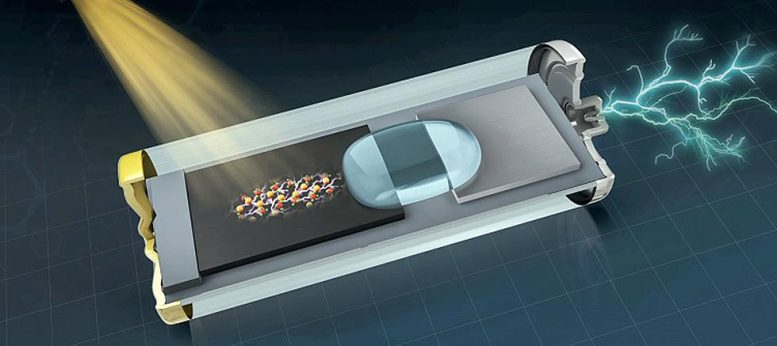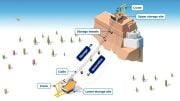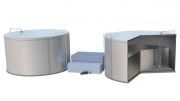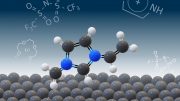
Surface science methodology reveals relaxation and failure mechanisms of energy storage devices. Credit: DICP
Long cycle life and high safety are required for energy storage devices (ESDs) in their large-scale applications. Therefore, it’s important to explore both the operating and failure mechanisms of ESDs.
Previous characterization techniques such as X-ray diffraction (XRD), transmission electron microscopy (TEM), X-ray spectroscopy and topography, and nuclear magnetic resonance (NMR) were based on bulk regions of electrodes or electrolytes, and they overlooked the critical surface/interface behaviors that govern the operation and failure in ESDs.
Recently, a research team led by Prof. FU Qiang from the Dalian Institute of Chemical Physics (DICP) of the Chinese Academy of Sciences (CAS) revealed the atmosphere-dependent relaxation and failure mechanisms of ESDs by in situ surface science methodology.
The results were recently published in Journal of the American Chemical Society.
The researchers visualized atmosphere-dependent relaxation and failure processes in ESDs by in situ Raman, X-Ray diffraction (XRD) and X-ray photoelectron spectroscopy (XPS).
They found that for aluminum ion battery (AIB), the relaxation effects of the graphite electrode in anhydrous atmospheres were manifested by recoverable stage-structure change and electronic relaxation. The mechanisms could be described as the redistribution of the anion/cation pairs within graphite electrode by in situ XPS.
Once exposure to hydrous atmospheres, H2O molecules from ambient could intercalate into the graphite electrode and hydrolysis reactions could be induced between newly intercalated H2O and ions. After H2O intercalation and hydrolysis, the failure behaviors of the graphite electrode happened as shown by the stage-structure degradation and electronic decoupling.
“We have developed the atmosphere-, temperature- and potential- controlled operando/in situ surface/interface techniques and well-defined model devices,” said Prof. FU. “Such methods can be extended to explore the relaxation and failure mechanisms of more ESDs, such as metal-ion secondary batteries/supercapacitors, and the interface reactions in metal-gas batteries.”
Reference: “In Situ Visualization of Atmosphere-Dependent Relaxation and Failure in Energy Storage Electrodes” by Chao Wang, Caixia Meng, Shiwen Li, Guohui Zhang, Yanxiao Ning and Qiang Fu, 13 October 2021, Journal of the American Chemical Society.
DOI: 10.1021/jacs.1c09429
This work was supported by the National Natural Science Foundation of China, the National Key R&D Program of China, the Strategic Priority Research Program of CAS, and the DICP&QIBEBT funding.









Be the first to comment on "Revealing Failure Mechanisms of Energy Storage Devices"